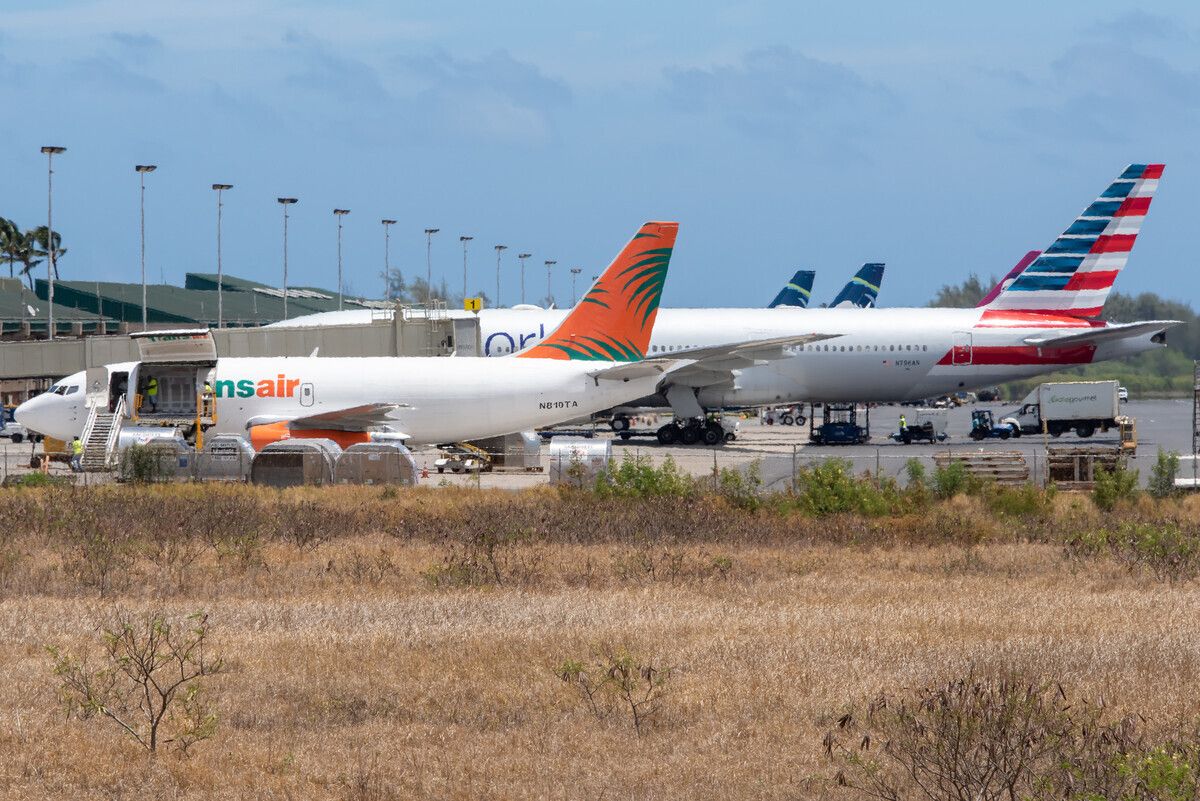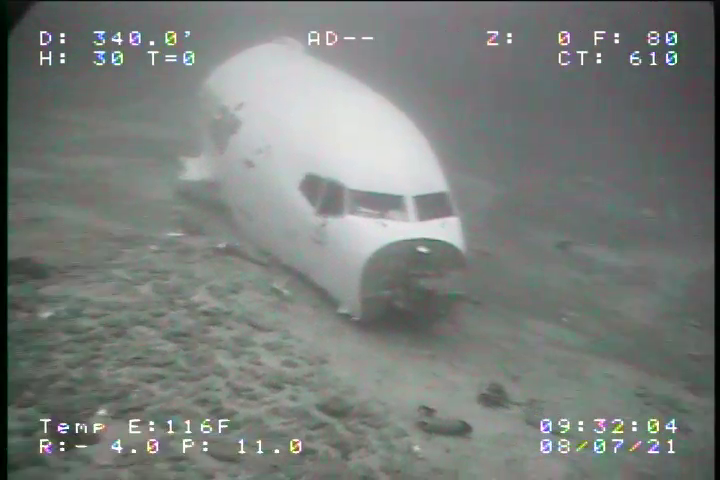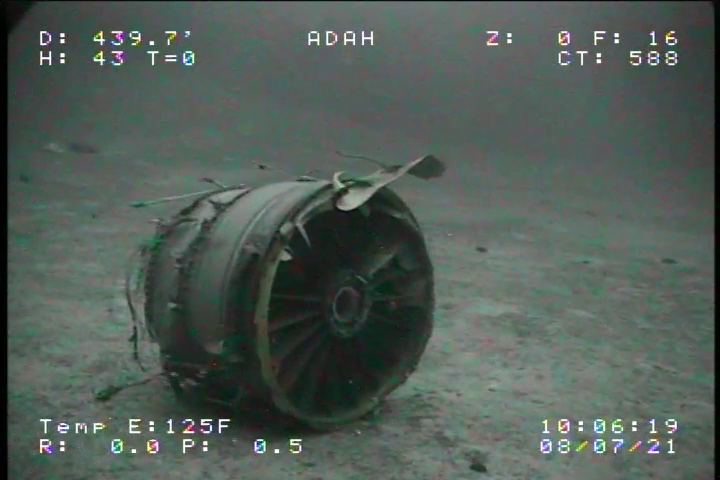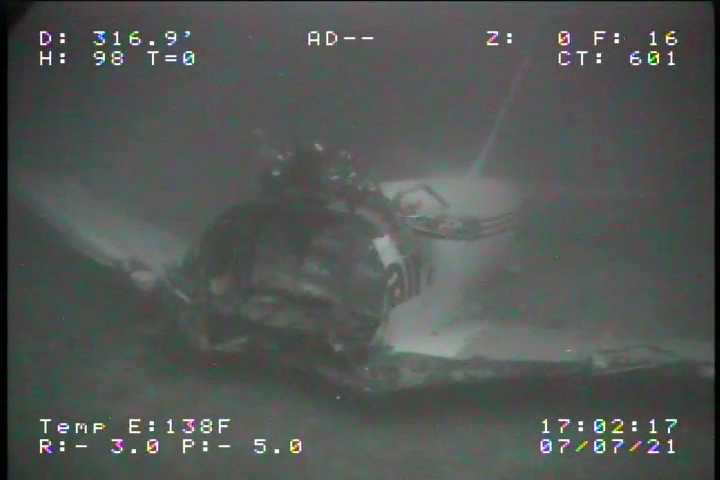The National Transportation Safety Board (NTSB) in the United States is pressing ahead with its investigation of Transair flight 810. The Boeing 737-200, which ditched in the water shortly after takeoff from Honolulu, went down on July 2nd. About a week later, the NTSB has found the wreckage and is now focused on learning more about the incident. Please note, there is sensitive imagery in this article.
NTSB has found the wreckage
The NTSB has located major components of the Boeing 737-200 on the seafloor in the Pacific Ocean. The aircraft, which went down after taking off from Honolulu, ditched in the water after facing some engine troubles.
Finding the aircraft required the NTSB to utilize sonar to survey the debris field. There was some floating debris that investigators were able to recover. However, the major components of the aircraft, such as the fuselage and engines, remain in the water.
Now, with the wreckage found, the focus is on recovering the aircraft components and putting together the story of what happened. This may not be the easiest task, however. Water may not be the kindest to aircraft parts. There may be other ecological concerns the NTSB has to deal with when bringing the aircraft back to the surface. Locating the aircraft was just one of the major steps in the investigation.
The NTSB investigation
The NTSB has been pulling together an investigative committee. The investigation includes the Federal Aviation Administration (FAA), Boeing, Pratt & Whitney, the National Air Traffic Controllers Association (NATCA), and Rhoades Aviation.
The Investigator-in-Charge has formed investigative groups. The groups include Powerplants, Airplane Systems, Structures, Operations, Human Performance, Air Traffic Control, Maintenance Records, Cockpit Voice Recorder, and Flight Data Recorder.
Some investigative groups will rely heavily on the wreckage that the NTSB has found on the seafloor. Some of the initial imagery may be beneficial to these teams investigating the incident.
The immediate focus has nothing to do with blaming anyone. The NTSB has not announced any immediate causes of the incident. All of the working groups on the investigation will contribute to determining what went wrong.
The incident
Rhoades Aviation, doing business as Transair, flight 810 took off from Honolulu's Daniel K. Inouye International Airport (HNL) shortly after 01:30 local time. About ten minutes after takeoff, the crew started to face engine issues and decided to turn back to Honolulu. Less than 30 minutes after takeoff, the aircraft was ditched in the ocean.
Thankfully, both of the pilots onboard the aircraft survived. As a cargo flight, they were the only two people onboard the flight bound of Maui's Kahului Airport (OGG). Both pilots had to go to hospitals, but they will be a key part of the investigation by being able to provide some firsthand information on what happened in the cockpit.
Stay informed: Sign up for our daily and weekly aviation news digests.
The aircraft involved in the incident was north of 45 years old. The aircraft's engines were manufactured by Pratt & Whitney, hence why they are involved in the accident investigation.
The Boeing 737-200 is not a common sight anymore. One of the first variants of the popular Boeing 737 ever produced, airlines turned to later-produced versions of the aircraft, and the -200s made their way out of the aviation world. However, some aircraft have lingered on as cargo jets.
Cargo carriers often operate older aircraft as they can be cheaper to acquire. Those airlines do not have to worry about extracting heavy utilization from the aircraft, upgrading interiors, and dealing with delays or cancelations that could impact passengers.
It is difficult to state just how incredible it is that both pilots have survived what appears to have been such a harrowing incident. The NTSB investigation continues, but finding the wreckage is a huge step forward.




